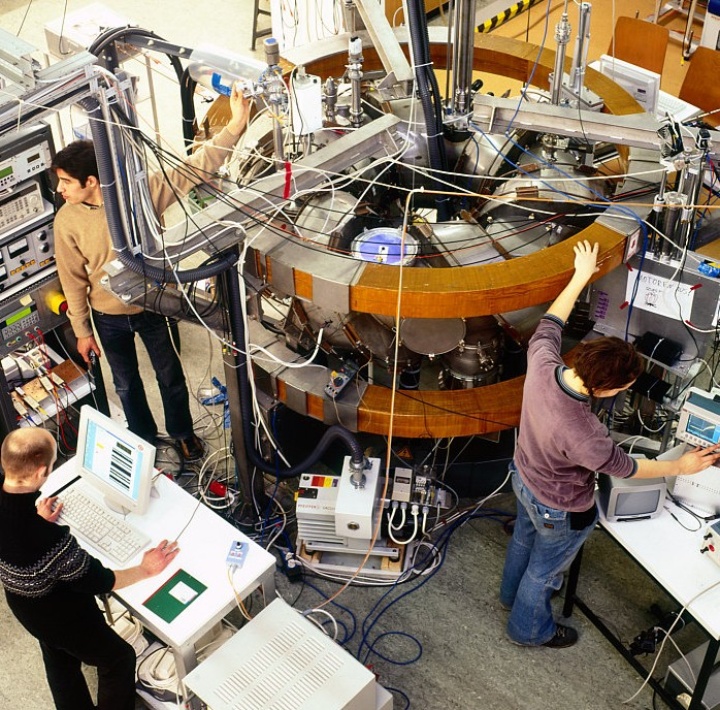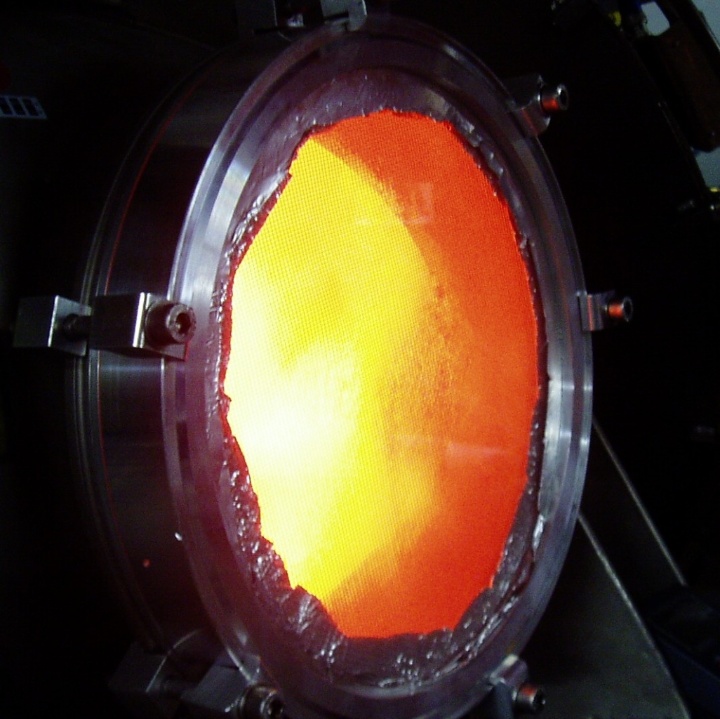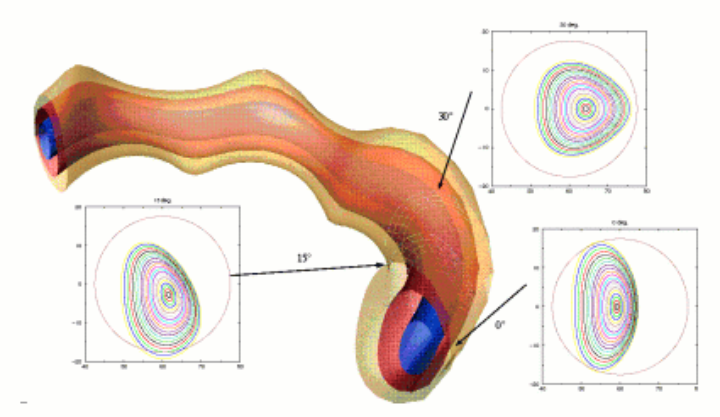The experiment TJ-K is a fusion device of the stellarator type. The special coil arrangement is that of a torsatron or heliotron. Toroidally closed magnetic flux surfaces are generated by three coils: a helical one, which winds six times around the torus-shaped vacuum vessel, and two vertical field coils which appear as brown rings in the figure. TJ-K was constructed at CIEMAT, Madrid. In 1999, TJ-K came to Kiel, Germany, and in 2005 it moved to the IPF in Stuttgart.
Although TJ-K was originally constructed to be operated with a fusion plasma, at IGVP it is operated with a low-temperature plasma. The reduced temperature enables probe measurements inside the plasma with high temporal and spatial resolution. At the same time, dimensionless plasma parameters, which govern e.g. turbulent processes, are similar to those in the edge region of fusion plasmas. Therefore, the experiments conducted at IGVP are relevant for fusion plasmas, too.
Typical plasma parameters are:
- Density: 5x10 17 m -3
- Electron temperature: 10 eV
- Ion temperature: 1 eV
- Working gases: H, D, He, Ne, Ar
Technical data:
- Major plasma radius: 0.6 m
- Minor plasma radius: 0.10 m
- Symmetry: l = 1, m = 6
- Rotational transform: 0.20 - 0.30
- Heating: microwaves at 2.45 and 8 GHz, 1-6 kW
The magnetic flux surfaces are 3-dimensional but have a 6-fold symmetry. The variation of the current ratio in the coils allows for a large range of different configurations. The figure shows a flux surface and three poloidal cross-sections.




